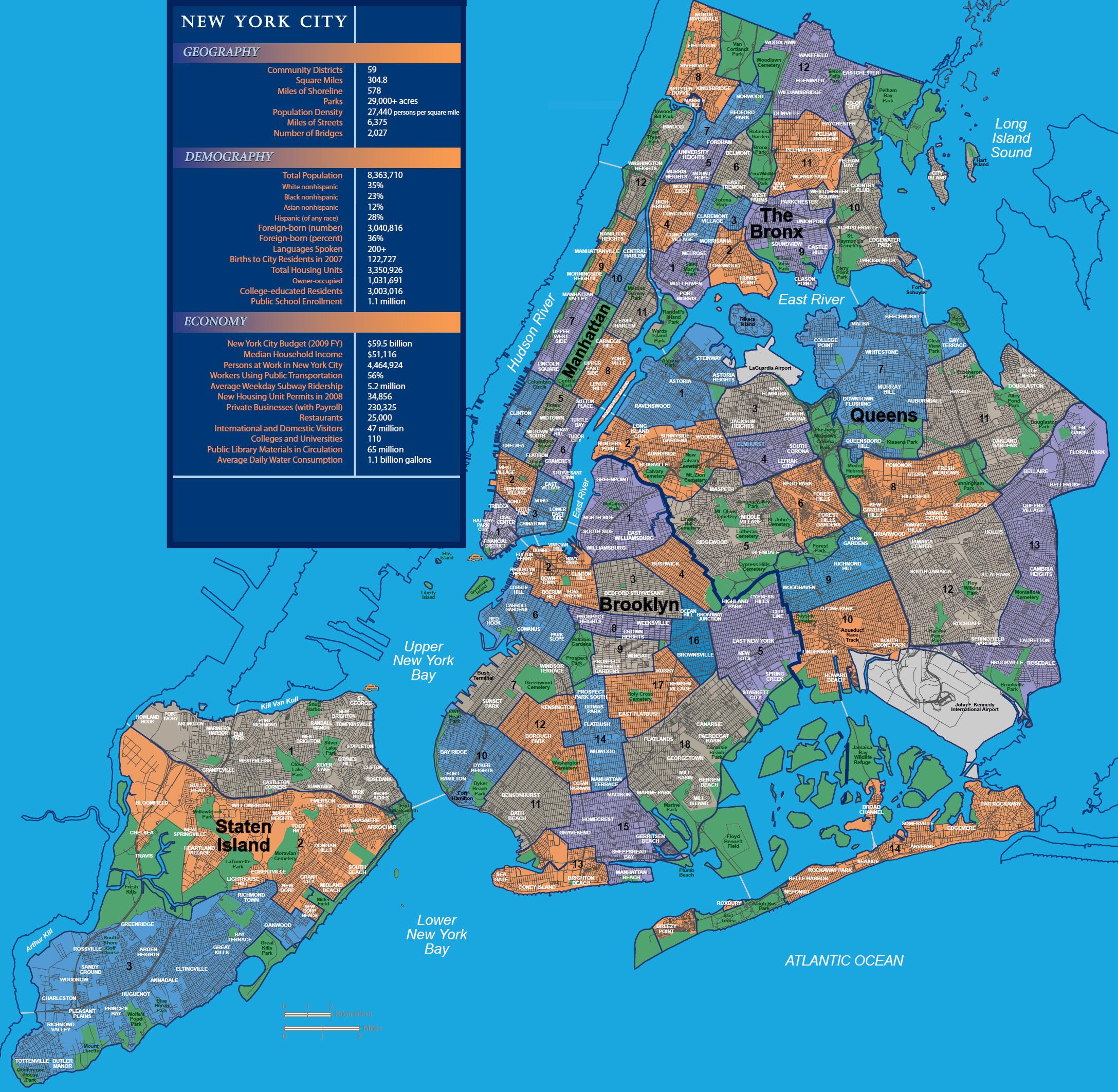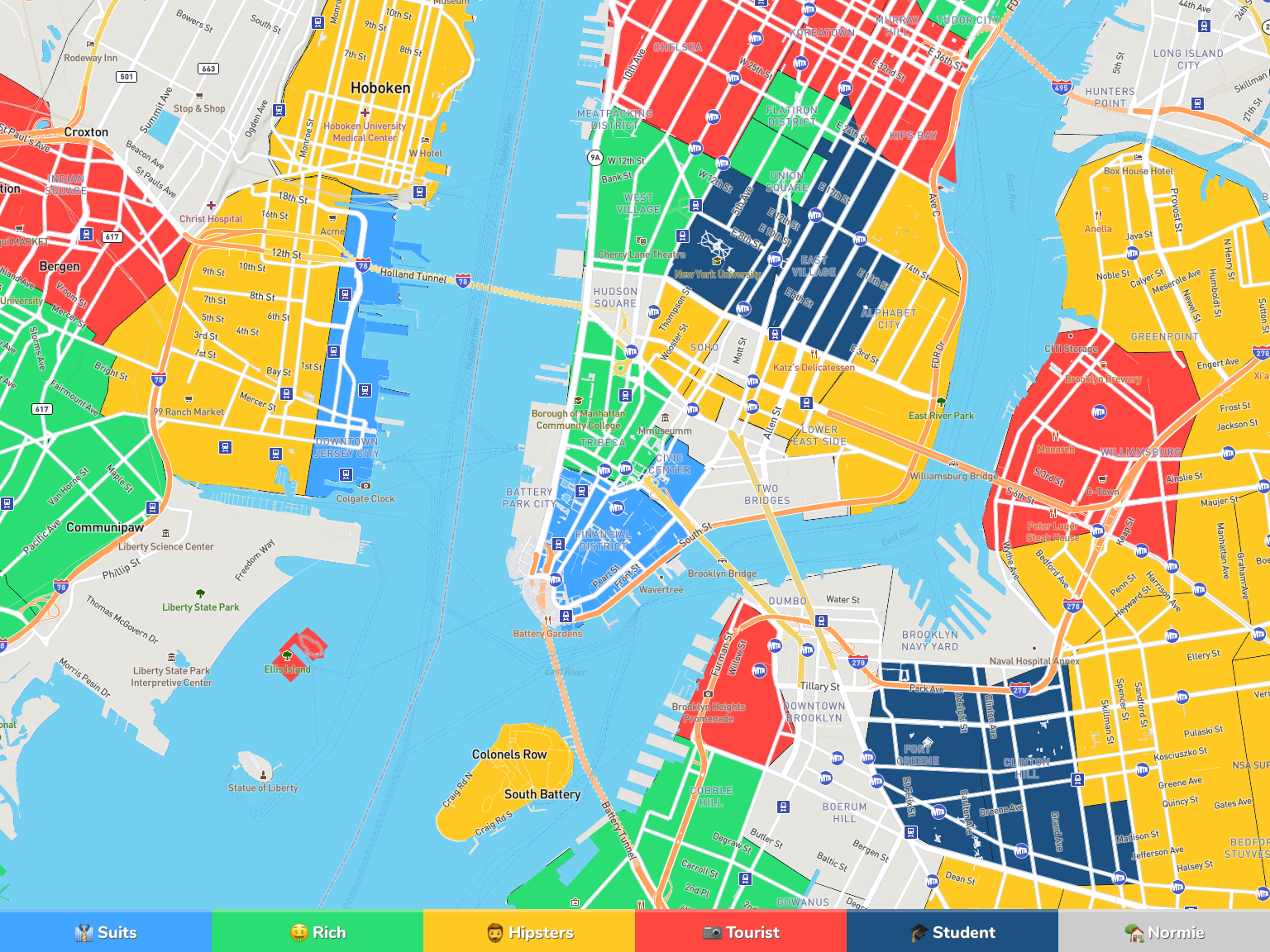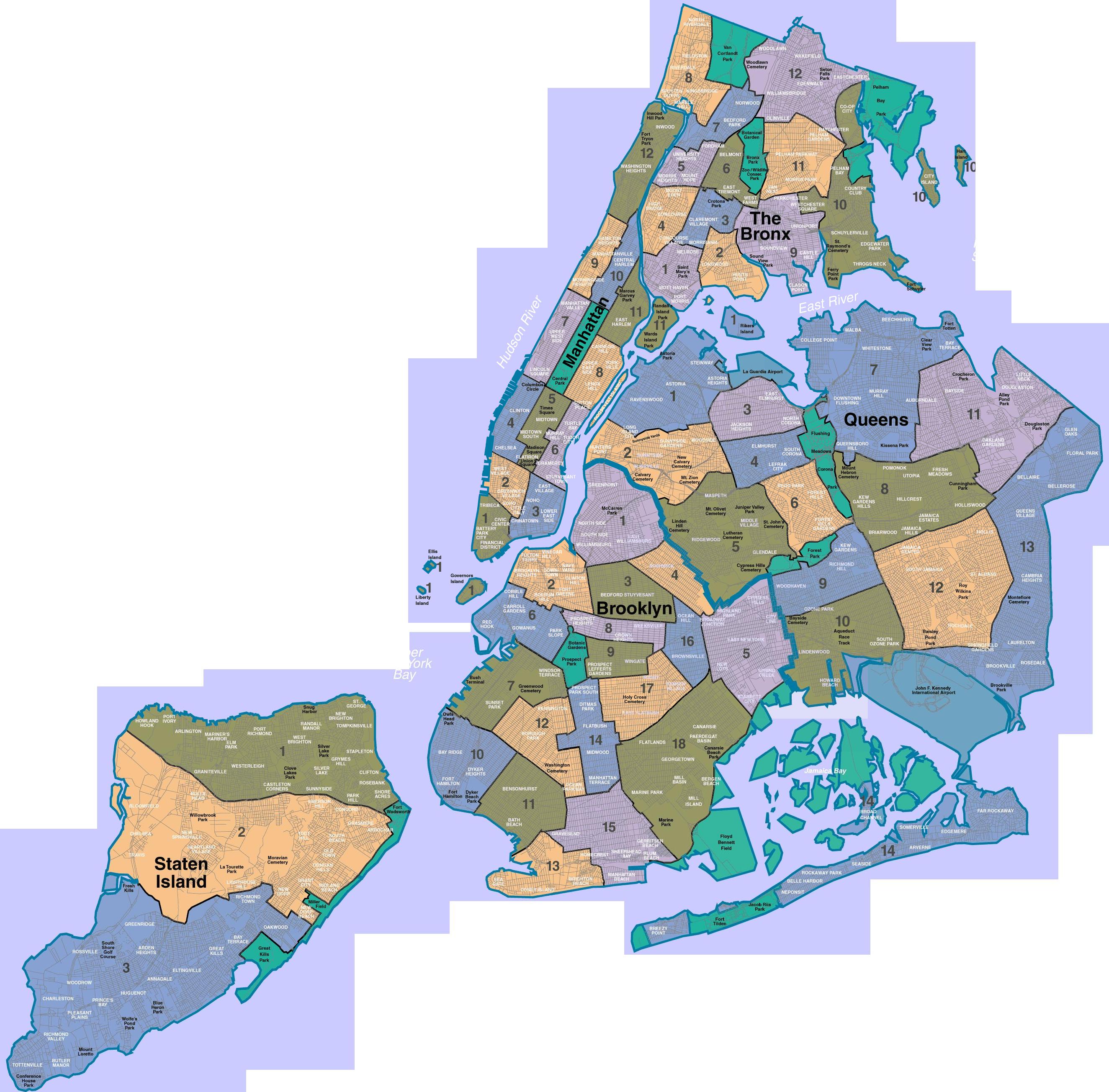So, you're curious about the worst neighborhood in New York City? Well, buckle up because we're diving deep into the gritty side of the Big Apple. New York City is a place where dreams are made, but it’s also a city with its fair share of challenges. While some neighborhoods shine like a Broadway star, others struggle with issues that make them less-than-ideal places to live. If you're wondering which parts of NYC might be considered "the worst," we’ve got the inside scoop for you.
Now, let’s clear something up—“worst” is subjective. For some, it might mean high crime rates. For others, it could mean poor living conditions or lack of amenities. But one thing’s for sure: every neighborhood has its own story. In this article, we'll break down the factors that define these so-called “worst” areas and shed light on what’s really going on.
Before we jump in, let me drop a quick disclaimer: this isn’t about bashing any community. It’s about understanding the realities of urban living in one of the world’s most iconic cities. So, whether you're a resident, a visitor, or just someone curious about NYC, keep reading. We’ve got all the dirt you need!
- What To Say Before Someone Goes Into Surgery A Heartfelt Guide
- Words That Describe A Powerful Woman Unlocking Her True Potential
Defining the "Worst" Neighborhood in NYC
First things first—what exactly makes a neighborhood “the worst”? Is it the crime rate? The poverty level? Or maybe the lack of public services? In New York City, the term “worst” can mean different things depending on who you ask. But generally speaking, these are the factors that come into play:
- Crime statistics
- Quality of housing
- Access to essential services (like schools, hospitals, and grocery stores)
- Public transportation options
- Community safety and cleanliness
These elements paint a picture of a neighborhood's overall livability. And while some areas might excel in one category, they could fall flat in others. Let’s take a closer look at how these factors play out in NYC’s less-than-ideal neighborhoods.
Crime Rates: The Red Flags
Crime is often the first thing people think of when discussing “bad” neighborhoods. And in New York City, certain areas have historically struggled with higher crime rates than others. According to recent data from the NYPD, neighborhoods like East New York, Brownsville, and South Jamaica consistently rank among the top for reported crimes.
- How Do I Reverse Credit To Mpesa A Comprehensive Guide For Everyday Use
- Naomi Scott Net Worth The Rising Stars Journey And Financial Success
But here’s the thing—crime stats don’t tell the whole story. While these areas may have higher rates of violent crime, it’s important to remember that many residents are working hard to improve their communities. Grassroots initiatives, community policing, and local organizations are making strides to turn things around. Still, if safety is your top priority, these neighborhoods might not be the best fit.
Key Crime Statistics to Know
Here are some eye-opening numbers to consider:
- East New York: Over 1,200 reported crimes in the past year
- Brownsville: Approximately 900 crimes reported annually
- South Jamaica: Crime rates have decreased by 15% in the last five years, but still remain high
These stats give us a snapshot of the challenges faced by these neighborhoods, but they also highlight the progress being made. Crime isn’t static—it’s something that communities and authorities are constantly working to address.
Housing Conditions: The Good, the Bad, and the Ugly
Another factor that defines a “bad” neighborhood is the quality of housing. In NYC, some areas suffer from outdated infrastructure, overcrowding, and lack of maintenance. Neighborhoods like Hunts Point in the Bronx and Coney Island in Brooklyn are often cited as examples of this issue.
For many residents, finding affordable housing in NYC is already a struggle. But when you add poor living conditions to the mix, it becomes even more daunting. Issues like mold, pest infestations, and lack of heat or hot water are unfortunately common in these areas. And while city officials and advocacy groups are working to improve these conditions, progress can be slow.
What’s Being Done to Fix Housing Issues?
There are several programs aimed at improving housing conditions in NYC. For example:
- The city’s Housing Preservation and Development (HPD) department offers grants and loans to property owners for renovations.
- Nonprofit organizations like Habitat for Humanity are building affordable homes in underserved areas.
- Community land trusts are being established to ensure long-term affordable housing options.
These efforts are crucial for creating safer, healthier living environments for all New Yorkers. But there’s still a long way to go.
Access to Essential Services
Living in a neighborhood without access to essential services can make life incredibly difficult. Imagine trying to raise a family without a nearby school, grocery store, or hospital. Unfortunately, this is a reality for many residents in areas like Far Rockaway and Morrisania.
Transportation is another big issue. Some neighborhoods are poorly connected to the rest of the city, making it hard for residents to get to work, school, or social activities. For example, parts of Staten Island and the northern Bronx are notorious for their limited subway access.
How Are Services Improving?
City planners and community leaders are actively working to address these gaps. Some recent developments include:
- Expanding bus routes to underserved areas
- Building new schools and healthcare facilities
- Encouraging local businesses to set up shop in these neighborhoods
While progress is being made, it’s important to recognize that change takes time. These neighborhoods need continued support to ensure they have everything they need to thrive.
Community Safety and Cleanliness
Safety and cleanliness go hand in hand when it comes to livability. Neighborhoods with high levels of litter, graffiti, and abandoned buildings can feel unsafe and unwelcoming. Areas like Mott Haven and Soundview in the Bronx have struggled with these issues in the past.
But don’t count them out just yet! Many residents and local organizations are taking matters into their own hands. Community clean-up events, neighborhood watch programs, and beautification projects are helping to transform these areas into more inviting places to live.
Who’s Leading the Charge?
Here are a few organizations making a difference:
- BronxWorks: A nonprofit focused on improving the quality of life for Bronx residents
- Brooklyn Community Board 16: Advocating for better services and resources in Brownsville
- Queens Library: Providing educational programs and support for underserved communities
These groups are proof that positive change is possible when people come together for a common cause.
The Role of Poverty in "Worst" Neighborhoods
Poverty is a major factor in what makes some neighborhoods less desirable. Areas with high poverty rates often face challenges in all the categories we’ve discussed so far—crime, housing, services, and cleanliness. But it’s important to note that poverty isn’t just an issue in these neighborhoods—it’s a citywide, even nationwide, problem.
In NYC, neighborhoods like Jamaica, Flatbush, and Washington Heights have higher-than-average poverty rates. While these areas also have vibrant cultures and tight-knit communities, the economic struggles can’t be ignored. Programs like SNAP, WIC, and Section 8 housing are helping to alleviate some of the burden, but systemic change is needed to truly make a difference.
Breaking the Cycle of Poverty
Here are some initiatives aimed at tackling poverty in NYC:
- NYC Opportunity: A city agency focused on reducing poverty through policy and programs
- Good Shepherd Services: Offering job training and education programs for youth and adults
- Food Bank for New York City: Providing meals and resources to those in need
These efforts are crucial for giving residents the tools they need to improve their lives and their communities.
Is It All Doom and Gloom?
Now that we’ve explored the darker side of NYC’s neighborhoods, it’s important to remember that every area has its positives. Even the so-called “worst” neighborhoods have their own unique charm and character. For example:
- East New York is home to a thriving arts scene and community gardens.
- Brownsville boasts a rich cultural heritage and strong sense of community.
- Hunts Point is known for its vibrant Latinx culture and annual festivals.
These neighborhoods may face challenges, but they also have plenty to offer. It’s all about perspective—and recognizing the strengths alongside the weaknesses.
What Can You Do to Help?
If you’re passionate about improving NYC’s neighborhoods, there are plenty of ways to get involved:
- Volunteer with local organizations
- Support small businesses in underserved areas
- Advocate for policies that promote equality and opportunity
Your actions, no matter how small, can make a big difference in the lives of others.
Final Thoughts: What Makes a Neighborhood Great?
So, what have we learned about the “worst” neighborhoods in New York City? While some areas may face challenges in terms of crime, housing, services, and poverty, it’s important to recognize that these issues are complex and multifaceted. No neighborhood is perfect, but every neighborhood has the potential to grow and improve.
As residents, visitors, and advocates, we have a responsibility to support these communities and work toward a better future for all. Whether it’s through volunteering, advocacy, or simply being more aware of the issues, we can all play a role in making NYC a more equitable and livable city.
Now, it’s your turn. Have you visited any of these neighborhoods? What was your experience like? Leave a comment below and let’s continue the conversation. And if you found this article helpful, don’t forget to share it with your friends and family. Together, we can make a difference!
Table of Contents
Defining the "Worst" Neighborhood in NYC
Housing Conditions: The Good, the Bad, and the Ugly
Community Safety and Cleanliness
The Role of Poverty in "Worst" Neighborhoods
Final Thoughts: What Makes a Neighborhood Great?



Detail Author:
- Name : Sonny Gaylord
- Username : nritchie
- Email : brielle.olson@emard.com
- Birthdate : 1989-01-01
- Address : 1337 Huels Point South Genesisstad, AR 57727-9730
- Phone : +1.256.955.8463
- Company : Halvorson, West and Gusikowski
- Job : Law Clerk
- Bio : Iusto officiis impedit omnis eveniet. Perferendis omnis suscipit ut soluta. Cumque velit iure qui alias nihil. Ex officia perferendis nobis minus quasi vero. Aut ut dolor odio iste.
Socials
facebook:
- url : https://facebook.com/lower
- username : lower
- bio : Minima et exercitationem magnam. Ea exercitationem non dolor tempora numquam.
- followers : 2197
- following : 1897
tiktok:
- url : https://tiktok.com/@reilly2470
- username : reilly2470
- bio : Eligendi est voluptatem et. Eos quam qui aut ut veritatis ex distinctio qui.
- followers : 6720
- following : 2184
linkedin:
- url : https://linkedin.com/in/reilly_xx
- username : reilly_xx
- bio : Ut id rerum eius est dolore.
- followers : 5012
- following : 2764
instagram:
- url : https://instagram.com/lower
- username : lower
- bio : Consequatur et odio rem. Fugit harum et nemo reprehenderit illo et. Laborum aliquid quis iure odit.
- followers : 4634
- following : 2914
twitter:
- url : https://twitter.com/reillylowe
- username : reillylowe
- bio : Tempora occaecati vitae non alias neque error consequatur. Est quaerat autem et corrupti. Harum sapiente reprehenderit tempora error.
- followers : 6937
- following : 1440